US and China issued a joint statement on Saturday to conclude the trade talks with Chinese Vice Premier Liu He on May 17 and 18. There was no mentioning of any number, but the statement said there were “consensus on taking effective measures to substantially reduce” US trade deficit in goods with China. And, China agreed to “significantly increase purchase” of US goods and services.
Additionally, there would be “meaningful increases” in US agriculture and energy exports to China, “expanding trade” in manufactured goods and services, encouraging “two-way investment” with “fair, level playing field for competition”. China also pledged to work on laws and regulations on intellectually property protections.
The Chinese State-owned Xinhua news agency described the statement as “vowing not to launch a trade war against each other”.
Here is a graphical summary by Xinhua.
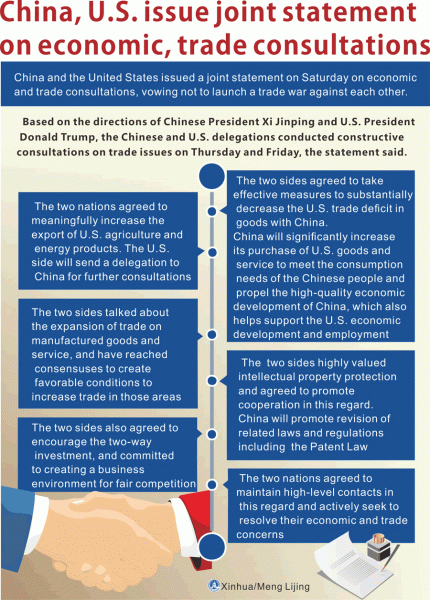
Full statement below:
THE WHITE HOUSE – Office of the Press Secretary
FOR IMMEDIATE RELEASE – May 19, 2018
Joint Statement of the United States and China Regarding Trade Consultations
At the direction of President Donald J. Trump and President Xi Jinping, on May 17 and 18, 2018, the United States and China engaged in constructive consultations regarding trade in Washington, D.C. The United States delegation included Secretary of the Treasury Steven T. Mnuchin, Secretary of Commerce Wilbur L. Ross, and United States Trade Representative Robert E. Lighthizer. The Chinese delegation was led by State Council Vice Premier Liu He, Special Envoy of President Xi.
There was a consensus on taking effective measures to substantially reduce the United States trade deficit in goods with China. To meet the growing consumption needs of the Chinese people and the need for high-quality economic development, China will significantly increase purchases of United States goods and services. This will help support growth and employment in the United States.
Both sides agreed on meaningful increases in United States agriculture and energy exports. The United States will send a team to China to work out the details.
The delegations also discussed expanding trade in manufactured goods and services. There was consensus on the need to create favorable conditions to increase trade in these areas.
Both sides attach paramount importance to intellectual property protections, and agreed to strengthen cooperation. China will advance relevant amendments to its laws and regulations in this area, including the Patent Law.
Both sides agreed to encourage two-way investment and to strive to create a fair, level playing field for competition.
Both sides agreed to continue to engage at high levels on these issues and to seek to resolve their economic and trade concerns in a proactive manner.




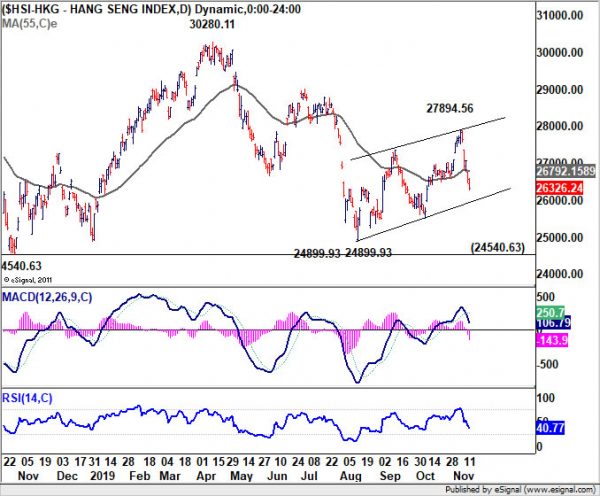
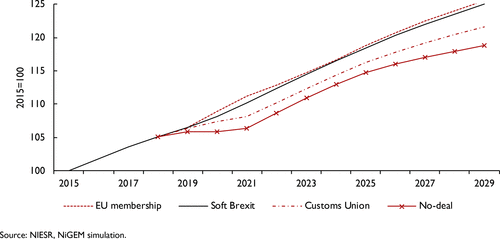
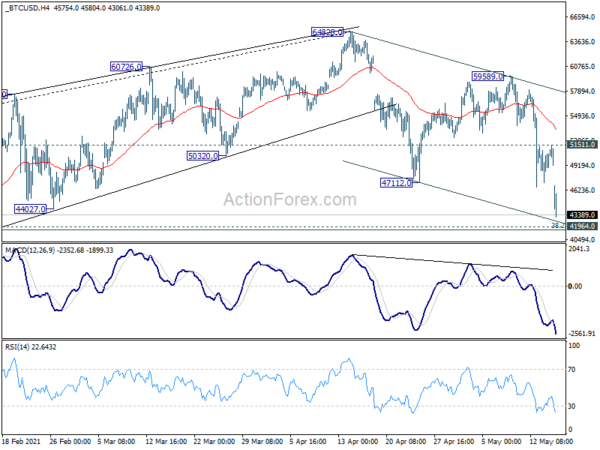
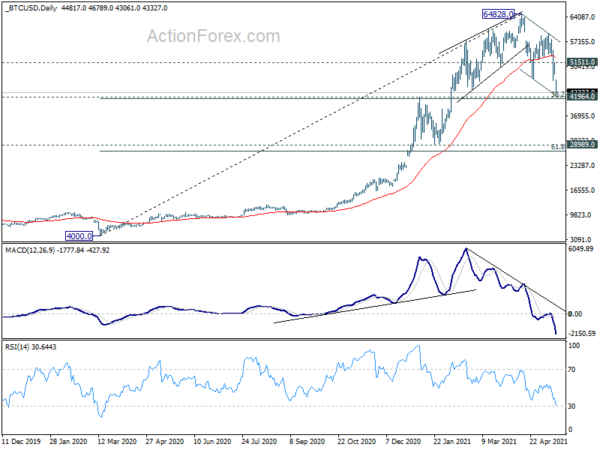
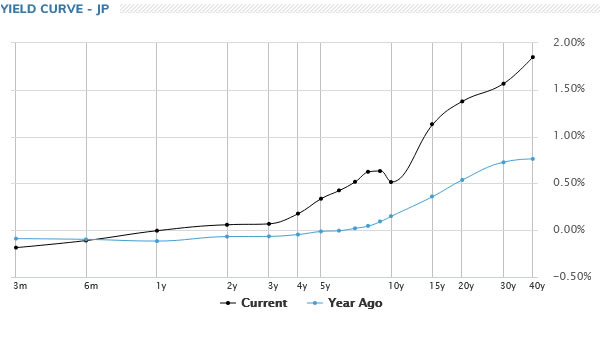
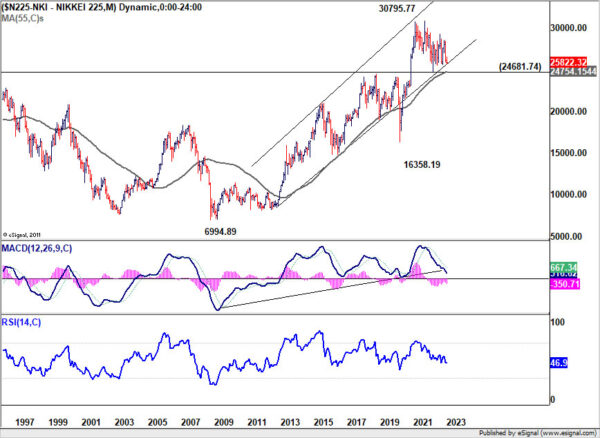

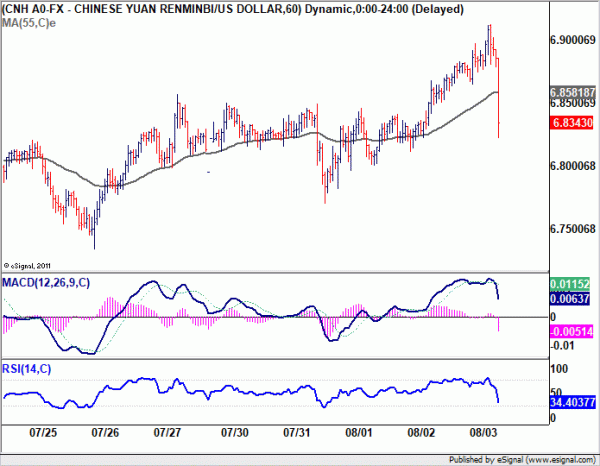
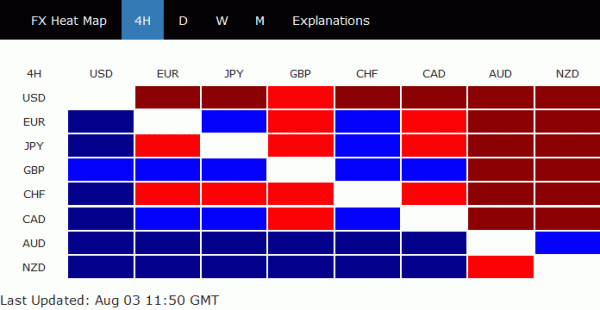
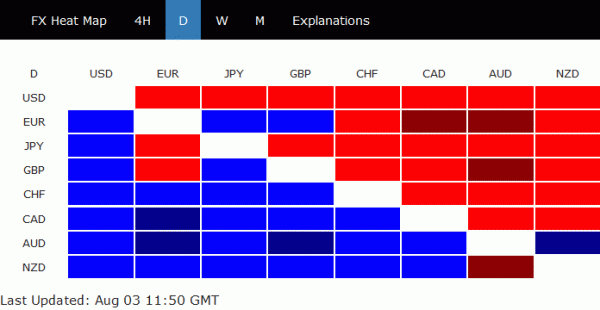
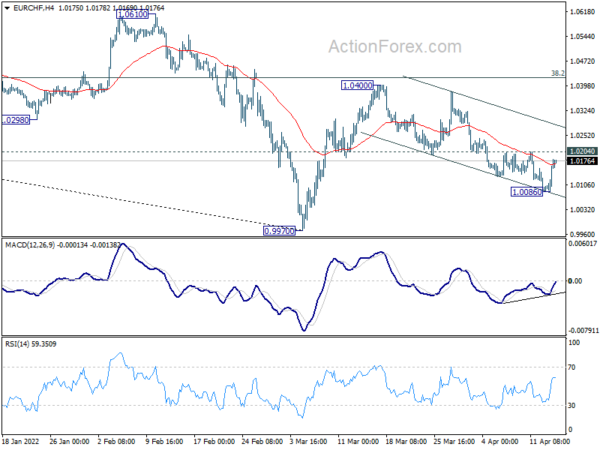
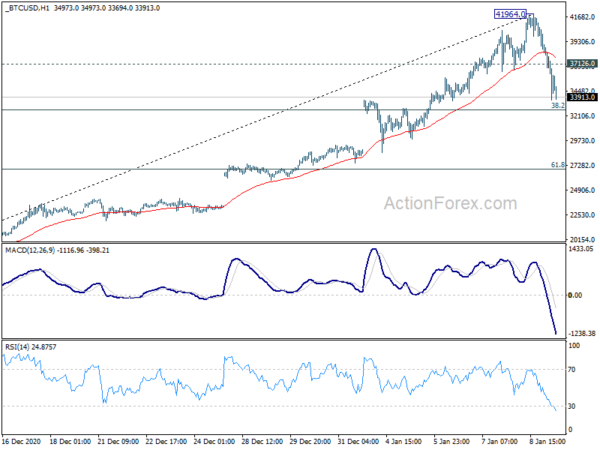
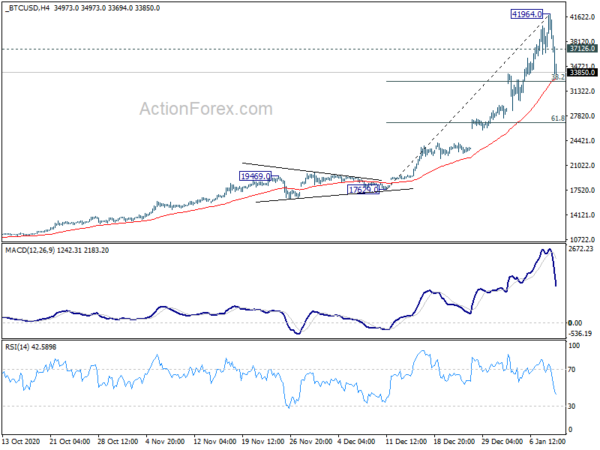
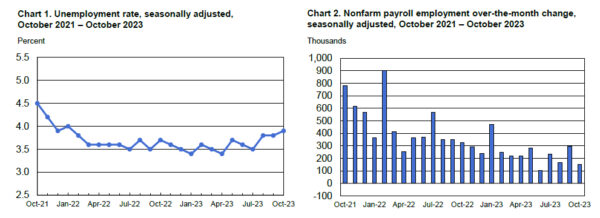
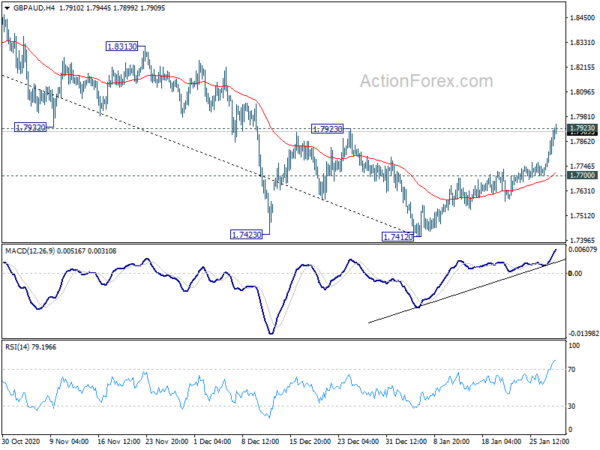
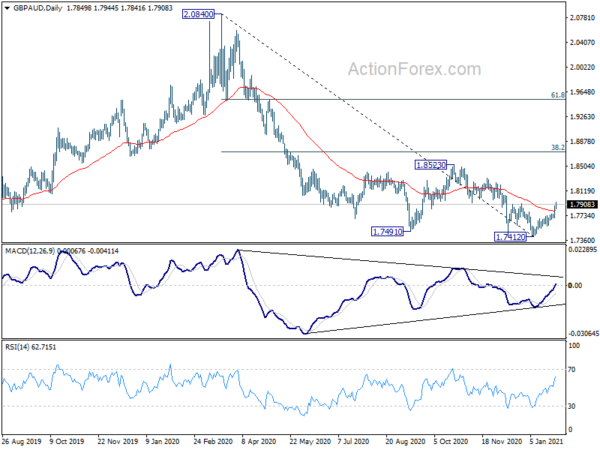
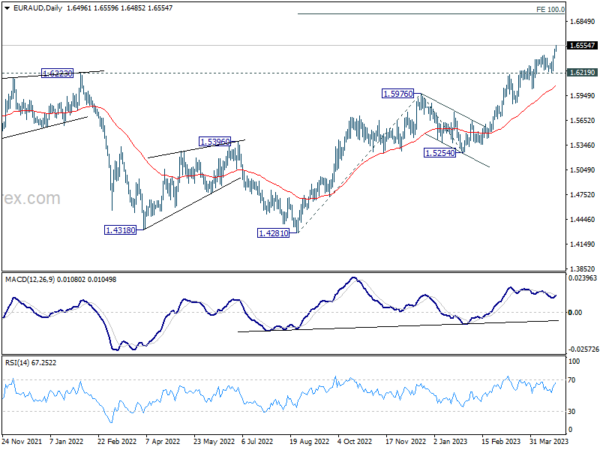
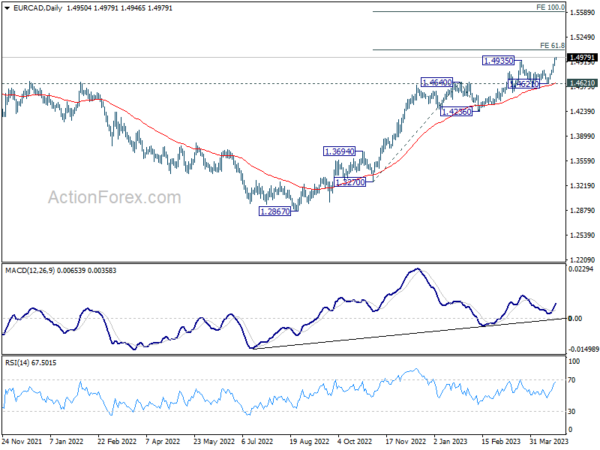
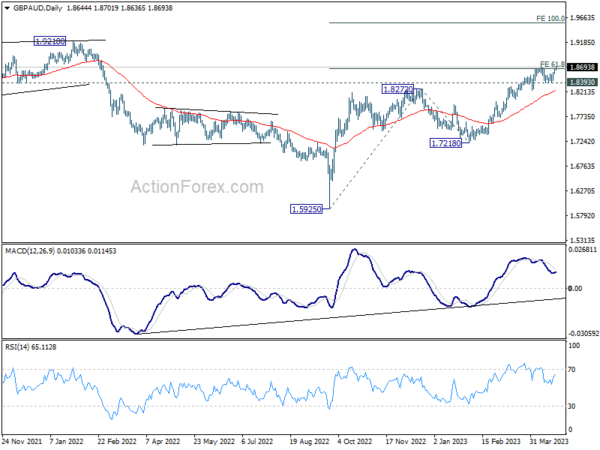
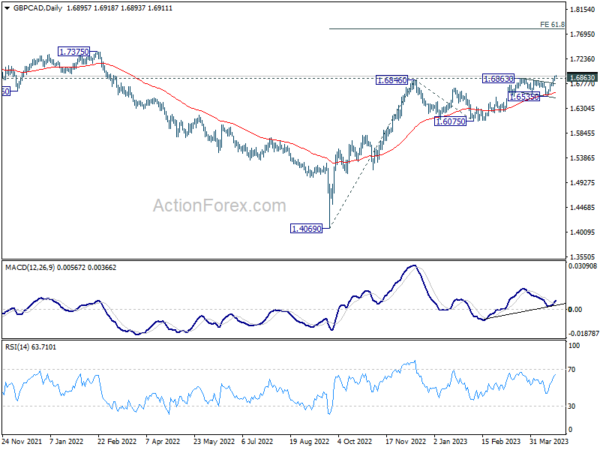
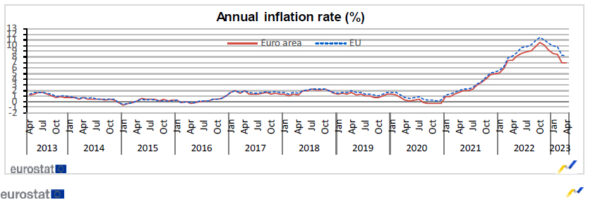
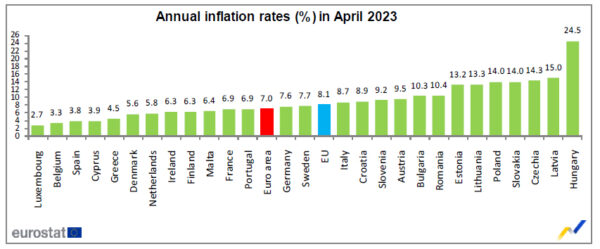
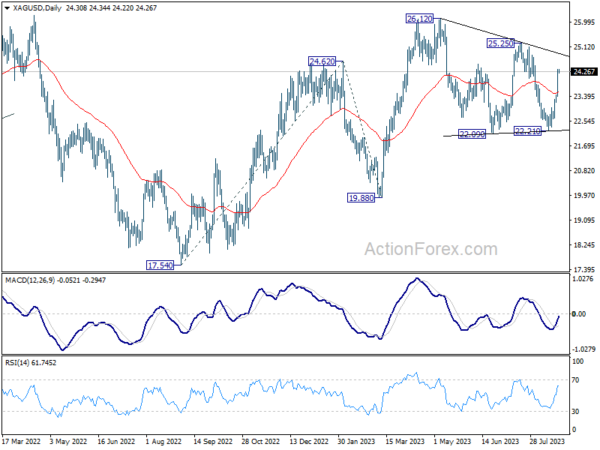
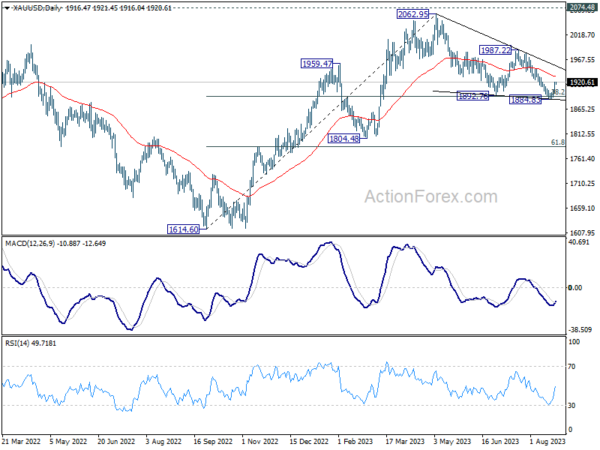
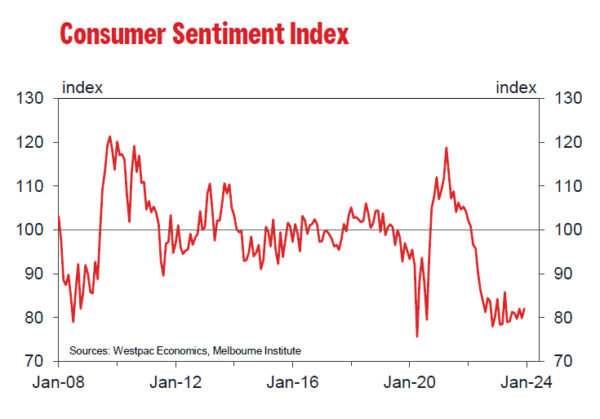
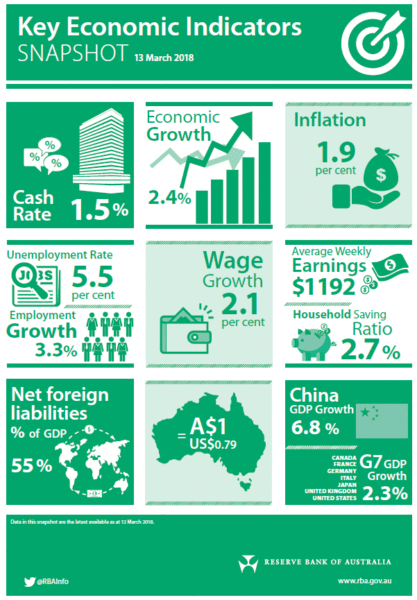

DOW already in medium term reversal? 24531 is next test
Let’s have a look at DOW after yesterday’s steep, -831 pts or -3.15% fall.
The strong break of 55 day EMA, coupled with bearish divergence condition in daily MACD, is significantly raising the chance that it’s now in medium term reversal. From price structure point of view, there was also a beautiful wave four triangle from 26616.71 to 23997.21, followed by a short impulse wave five from 23997.21 to 26951.81. Unless DOW could get back above 55 day EMA quickly, otherwise, risk is now heavily on the downside.
So how far could DOW fall to? If we take a less bearish view, it’s just correcting the uptrend from 2016 low at 15450.56 to 26951.81. Then, first support is 55 week EMA (now at 24531.54). Defending this support will keep the medium term intact and invalidate the above mentioned medium term reversal case. However, firm break there should at least send DOW back to 38.2% retracement of 15450.56 to 26951.81 at 22558.33 before bottoming.